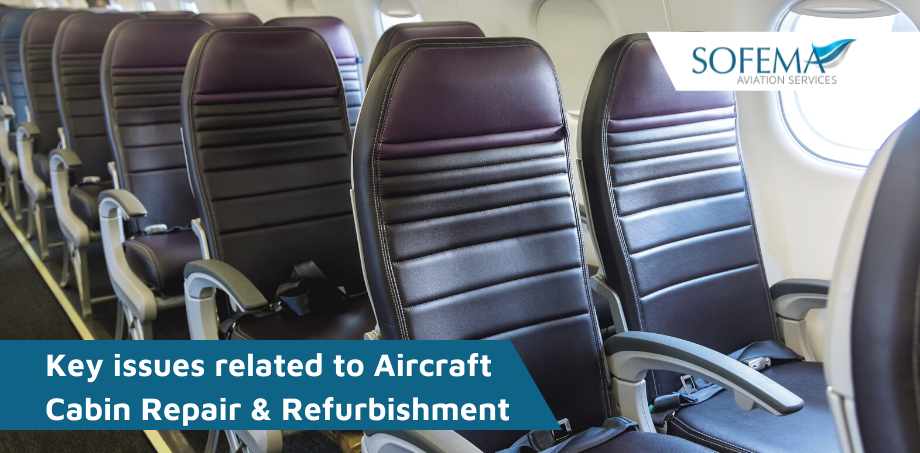Sofema Aviation Services (SAS) www.sassofia.com considers key issues related to aircraft cabin repair & refurbishment.
Introduction
The Embodiment of Cabin Modifications is typically performed independent of the involvement of the manufacturer. The operator assumes primary responsibility; however, the Buyer Furnished Equipment (BFE) manufacturer is usually a stakeholder in the certification process.
Development of the certification plan is a very important element of the project and establishes the project process as well as methods which will be employed to demonstrate the necessary compliance to enable the certification of the modification.
The certification plan defines and outlines the entire project from a technical and regulatory perspective. Identifying both the new areas of the modification as well as the disturbed aspects areas or systems.
The certification plan is also a key element of the validation process which is required to obtain an approved STC and enable the application for entry to service when the project is complete.
Certification Considerations
- Prior Approval or testing is required (Dynamic & Static Structural Testing).
- DO-160, flammability, EMI, Head Injury Criteria, abuse load, etc.
- Mixed Configurations / different LOPA’s /.
- Previously installed STCs or configuration changes?
- Is Lessor approval required?
- Confirmation regarding supplier’s capability and capacity.
- Certification through Minor modifications or Service Bulletins.
- Major modifications through Supplemental Type Certification (STC).
- Stand Alone Reconfiguration or in conjunction with Heavy Maintenance Visit (HMV)?
- Certification Management Plan Ownership?
- Provision and management of all data (OEM / STC / BFE).
- Facilities Tooling & Equipment.
- Integration of Parts & Components (For example IFE integrated into passengers’ seats or Galley Units).
- Training Requirements, User & Service Documentation – Troubleshooting Data – Maintenance Requirements (Aircraft Maintenance Program).
- Flight Test Requirements – Flight Test Plan.
Notes on DO-160 Testing
- Outlines the procedures and environmental tests required for airborne equipment.
- First published in 1980 and is currently on revision G.
- DO-160 standard and the EUROCAE ED-14 standard are identically worded.
- DO-160 testing involves a wide range of factors, from humidity and temperature to electrical interference and shock resistance.
- The standard is intended to cover almost anything that can disrupt the performance of an airborne electrical or electronic device.
- By undergoing the certification and testing process, a DO-160 compliant device can deliver reliable and accurate operation in any flight condition.
Compliance Matrix
A compliance matrix (CM) becomes a key part of the certification process.
- The CM is used to list all applicable regulations to which the post-modified aircraft must demonstrate compliance.
- The CM identifies the method of compliance for each regulation and enables a focus on any areas of concern.
- The CM will also enable the identification of affected systems and whether compliance will be shown by testing, computation, similarity, or other acceptable methods. ( Alternative Means of Compliance (“AMOC”)?
Next Steps
Follow this link to our Library to find & Download related documents for Free.
Sofema Aviation Services (SAS) and Sofema Online (SOL) provide Consultancy, Classroom, Webinar, and Online Training including the following course: EASA CS 25 Compliant Cabin Certification & Mods Training Program – 5 Days
For additional details visit our websites www.sassofia.com and www.sofemaonline.com or email team@sassofia.com
Tags:
Aircraft Cabin, Aircraft Maintenance, Aircraft Repair, aviation, Cabin Certification, Certification Specification 25 (CS 25), Compliance Matrix, CS 25, EASA, SAS blogs




